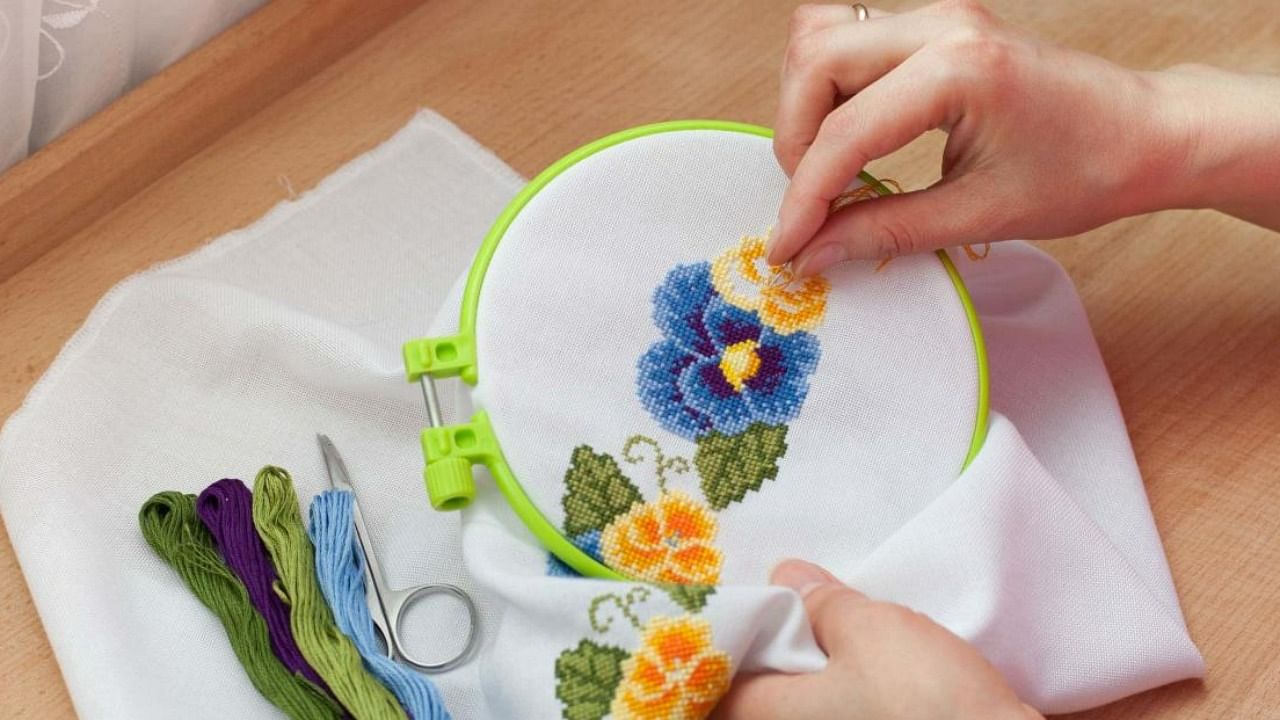
Back in my school days, socially useful and productive work, or the SUPW period, was a half-hour respite during the six-hour monotony at school. It was a good break every Wednesday. What made this period more interesting was that, unlike the usual chalk and talk, working with our hands, like stitching, knitting, or embroidery, or learning everyday skills like folding clothes, table napkins, laying the table at home, etc., were taught through simple instructions.
Our journey began with threading a needle and hemming a handkerchief. Materials like Anchor threads, cross-stitch cloth, wool, or even plain fabric meant an outing to the city market. Evaluation was simple: a neatly embroidered flower on a corner in chain stitch and back stitch would guarantee an A+; all others were awarded a B. My mom was behind my success story.
Her enthusiasm for embroidery got kindled, and browsing through Pins and Needles or Woman and Home—magazines, which were the search engines in the pre-Google era—would help her create masterpieces. Her talent was promptly rewarded with an A+ for me, as my project was the best in class. Motivated by her own work, there was no looking back now. She climbed her ladder of creativity and started exploring her skills independently, from knitting sweaters to making a crochet dress to some tatting work too.
As for me, it was a tablecloth with cross-stitch embroidery for the next assignment. The art of making frayed edges by bundling threads together and cross-stitching roses in mixed shades of crimson, red, and white in the middle was a piece of cake for her. She aced the art of getting identical flowers all over. Mom and I were elated with all the small projects until I was tasked with knitting two rows in school for assessment.
The needles crossed pensively against each other for each knit and purl. All the fun was coming to an end as projects got bigger. The next-level challenge was stitching a Jubba. Mom put her hands up, as the sewing machine wasn’t ready to do this job smoothly. Looking for alternatives, I managed to find a tailor who agreed to do it for a fee.
On the day of our test, out of a class of thirty-five students, 10 Jubbahs turned out of the same cloth. Somehow, we convinced the teacher that it was the cloth merchant who insisted on our purchasing the same cloth. For the tenth board exam, a romper with illustrations and newspaper cuttings had to be stitched and filed. This time our seniors turned saviours, and the files were lent down.
Thanks to all this, I was able to learn the basics of embroidery, knitting, and stitching. Now, I take pride whenever I mend small things and don’t request others for help.